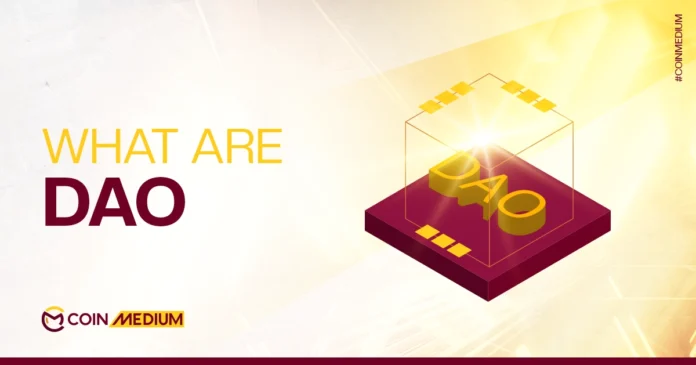Decentralized Autonomous Organizations, or DAOs, have become one of the most famous innovations in the crypto world. DAOs are groups that use blockchain technology to make collective decisions without relying on a traditional management structure. Instead of CEOs or boards, they rely on just codes and smart contracts to enforce rules and handle funds.
DAO works on a simple but powerful idea, which is to bring people together online, pool resources, and make decisions in a transparent way. Whether it’s managing a shared treasury, investing in projects, or even running a community, members vote on proposals and every decision is recorded on the blockchain. This has opened new doors for collaboration, from decentralized finance (DeFi) to social and cultural projects.
Yet DAOs are not without challenges. Questions about governance, legal recognition, and security continue to surface. Some have thrived, becoming billion-dollar ecosystems, and others collapsed due to hacks or poor coordination. These successes and failures highlight both the potential and the risks of replacing traditional organizations with code-driven collectives.
In this article, we’ll break down what DAOs are, how they work, the different types that exist, and the key challenges they face. We’ll also take you into a tour at real-world examples that show how DAOs are reshaping industries, and what the future might hold for these digital communities.
What is a DAO?
As we mentioned before, DAO is basically an online group that runs without a boss. No CEO, no board meetings behind closed doors. Instead, the rules live on a blockchain, and smart contracts handle the boring stuff automatically. If you’ve ever joined a co-op or a community club, it’s a bit like that, but digital, global, and open 24/7, and it is based on 3 principles:
- Decentralization. Power isn’t stuck at the top. Members usually hold tokens, and those tokens act like votes. Want to spend funds on a new project? The community decides. Want to change how things work? Again, the community votes. It flips the usual “boss tells everyone what to do” model on its head.
- Transparency: Nothing is hidden. Every proposal, every vote, every coin moved from the treasury is visible on the blockchain. You don’t have to trust someone’s word, you can just check the record yourself.
- Community decision-making: People in a DAO aren’t just watching from the outside. They pitch ideas, argue about them, vote, and help set the long-term plan. Some DAOs are about money, others about art or even activism. The point is, the people involved steer the ship together.
Benefits of DAOs
One clear advantage of DAOs is openness. Everything happens on the blockchain, spending, voting, proposals. Anyone can look it up. That makes it harder for money to disappear or for leaders to make quiet deals. In a way, it’s the opposite of a boardroom where decisions are hidden.
DAOs also bring in real participation. If you’re part of the group, you actually get a say. You can vote, suggest, and shape what happens next. People don’t just feel like followers, they feel like owners. That sense of shared control often pushes members to stay active because they know their voice matters.
And then there’s the global side. A DAO doesn’t care where you live. Someone in Dubai can work with another member in New York or Nairobi, all in the same project. This mix of people and ideas makes DAOs more creative and flexible than many traditional setups that are tied to one place.
Challenges, Risks, and Lessons
The thing with DAOs is that they sound great on paper, but real life brings problems. The legal side is still a grey zone. In most countries, nobody really knows how to treat them, are they companies, clubs, or something else? That leaves members in a strange spot when taxes or disputes come up. No clear rules means a lot of uncertainty.
Another problem is accountability. If a DAO ends up in court, who takes the blame? The group itself? The developers who wrote the code? Maybe the company that pushed the project? Or just the people who voted for the decision? Right now nobody really knows, and that lack of clarity makes DAOs harder to trust.
In the DAO world everything depends on code, and code can break. The first big DAO in 2016, simply called The DAO, learned this the hard way. Hackers spotted a bug and drained tens of millions in Ether. That single event still gets mentioned whenever people talk about risks. Even now, DAOs deal with smart contract flaws and targeted attacks.
The hack was a disaster, not just a headline. Back then, the stolen Ether wasn’t small change, it was a big slice of the whole supply. Some thought Ethereum could die right there. The community’s answer? A hard fork. That split the chain into two: Ethereum (ETH), which undid the damage, and Ethereum Classic (ETC), which kept the old record. The choice saved ETH, but the argument over whether it was right never really went away.
Governance isn’t always smooth either. Many members don’t even vote, while a few “whales” with large token holdings can sway the outcome. Constitution DAO in 2021 showed both sides of the story: thousands of people crowdfunded millions of dollars in days, but the group fell apart because of coordination issues.
Not every story ends badly though. MakerDAO has become a core part of DeFi, running the DAI stablecoin successfully for years. The contrast between failures and successes is the real lesson here: DAOs can work, but they’re still young, messy, and far from perfect.
At the end of the day, DAOs are still an experiment, part idealism, part trial and error. They’ve shown flashes of what online communities can achieve when people share power and resources, but they’ve also stumbled in very public ways. Whether they’ll become a lasting model or just a stepping stone, DAOs have already changed how we think about working together.

